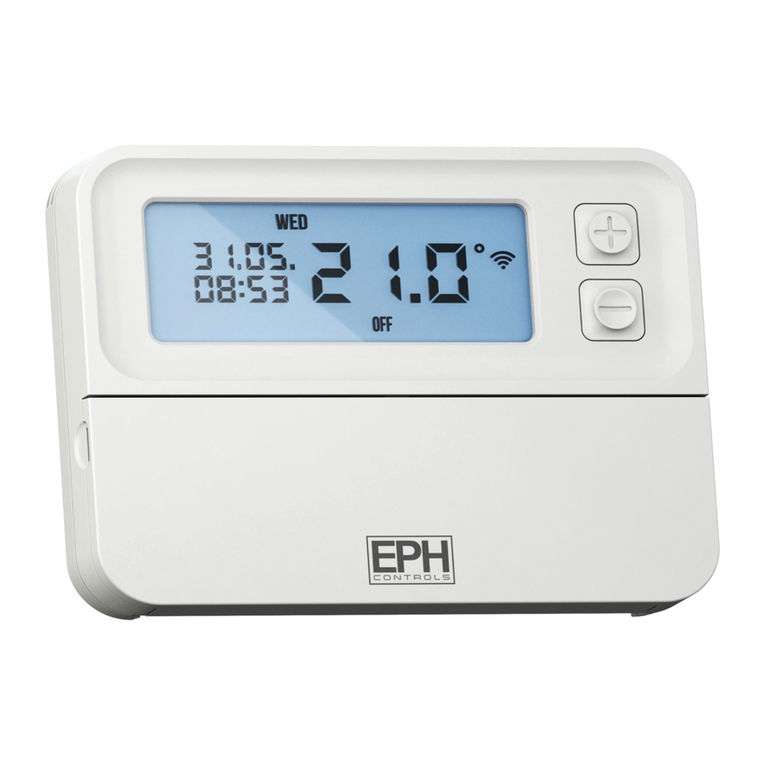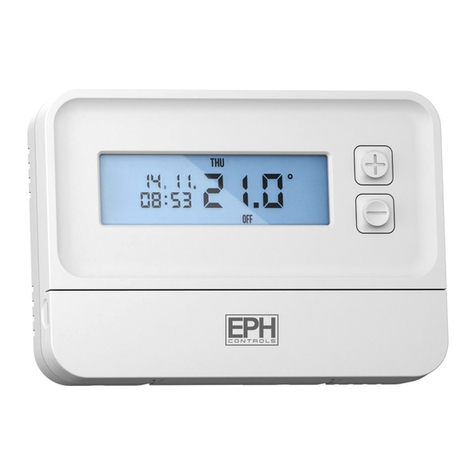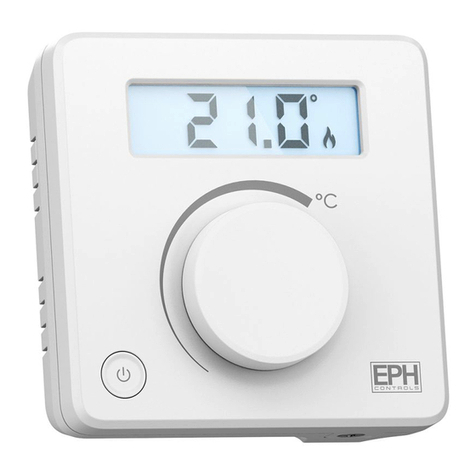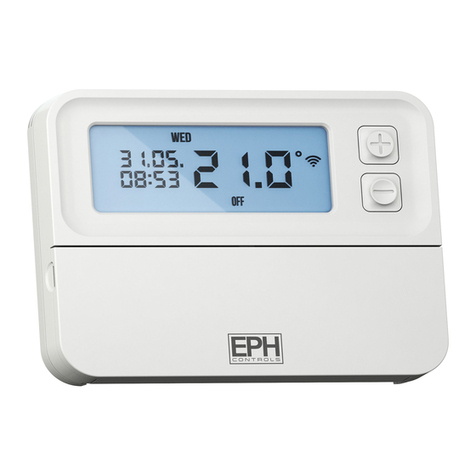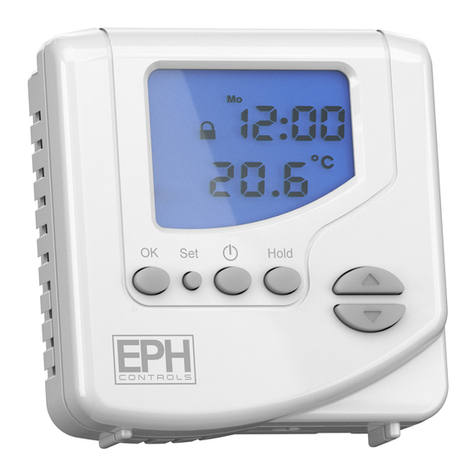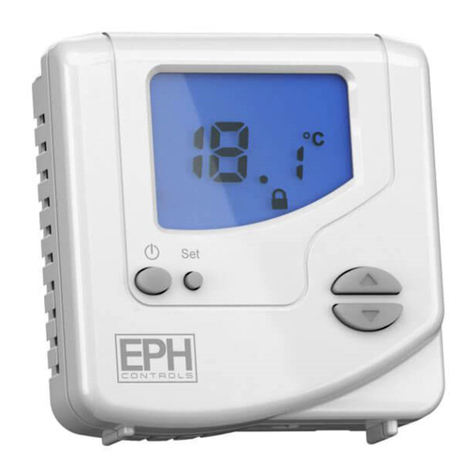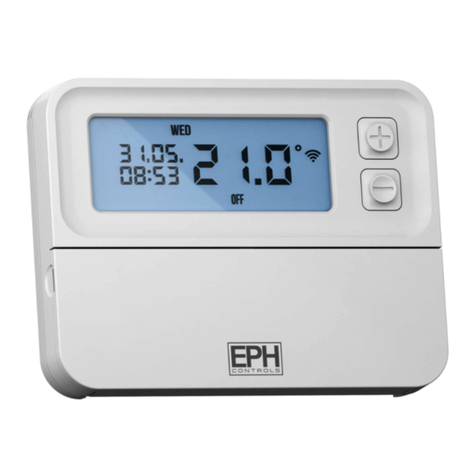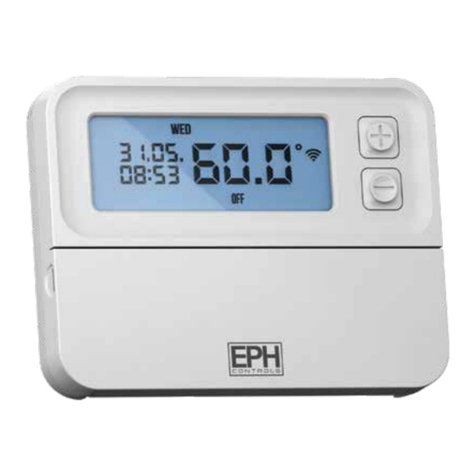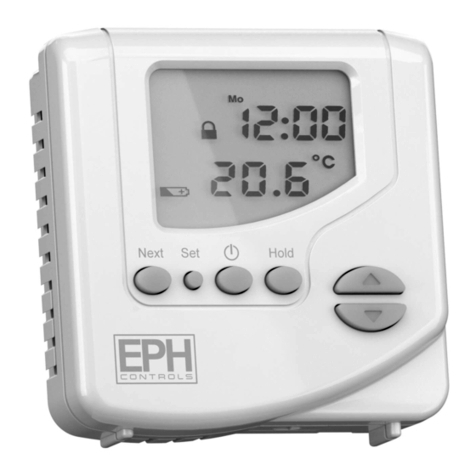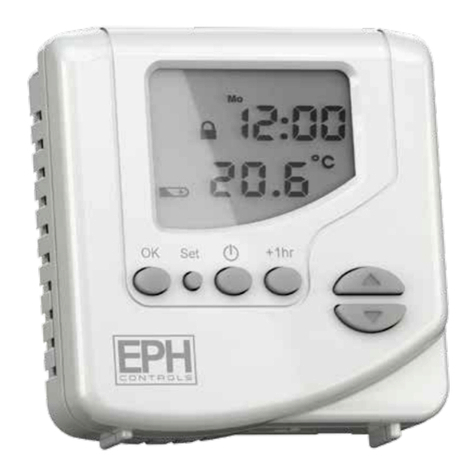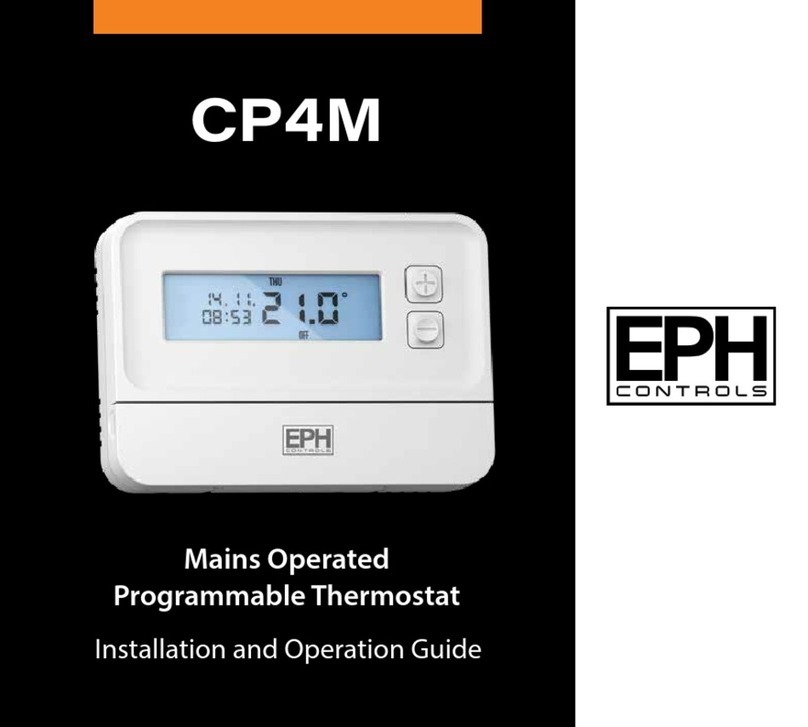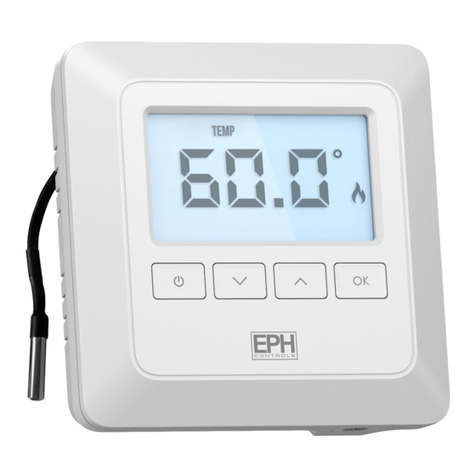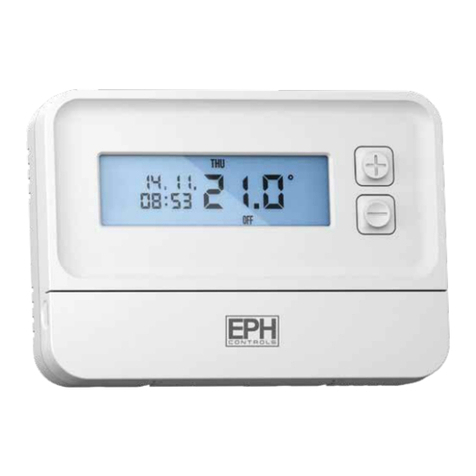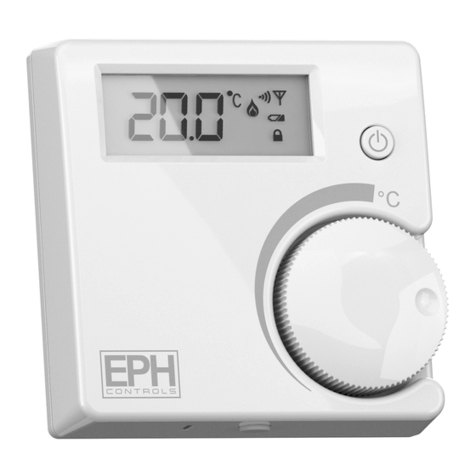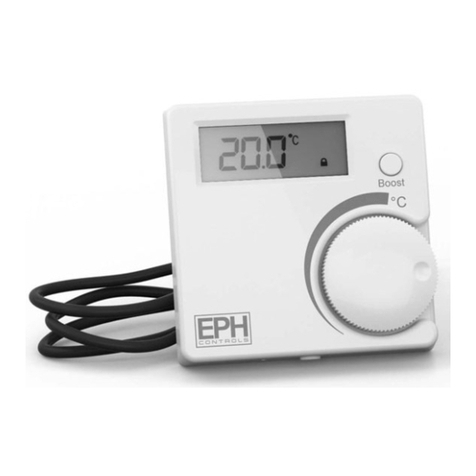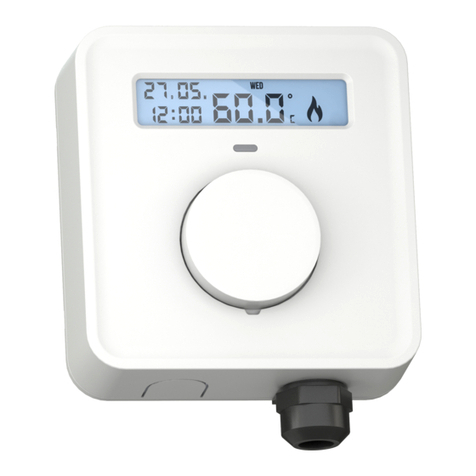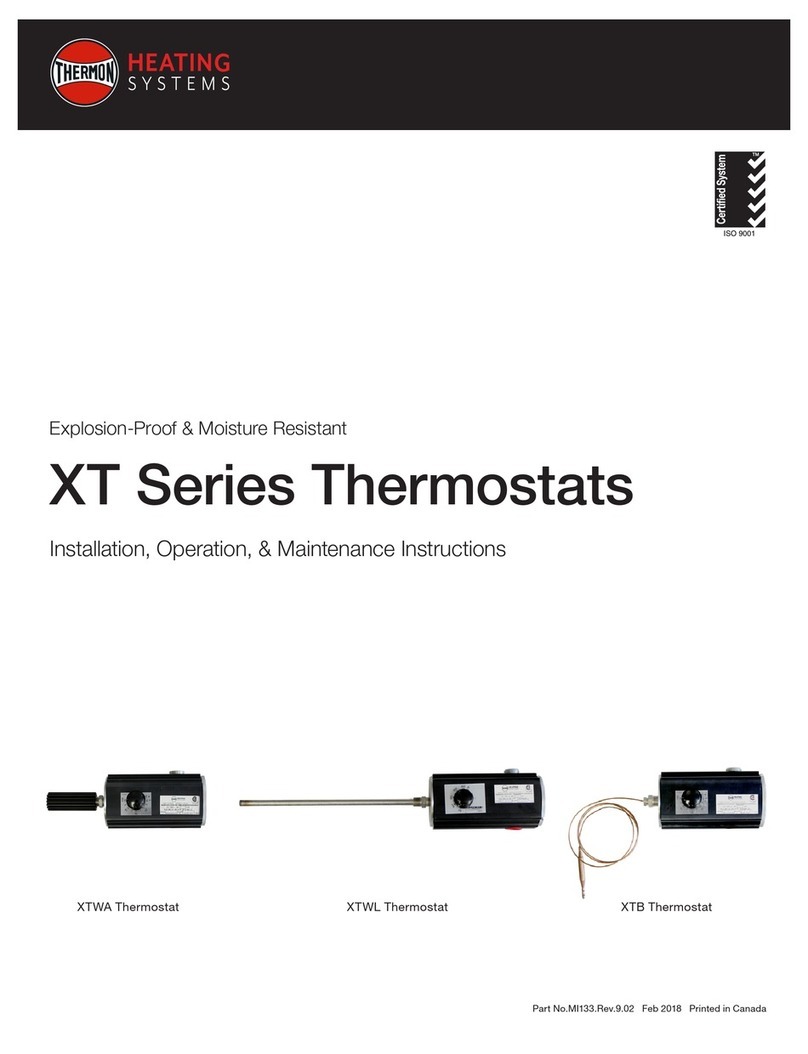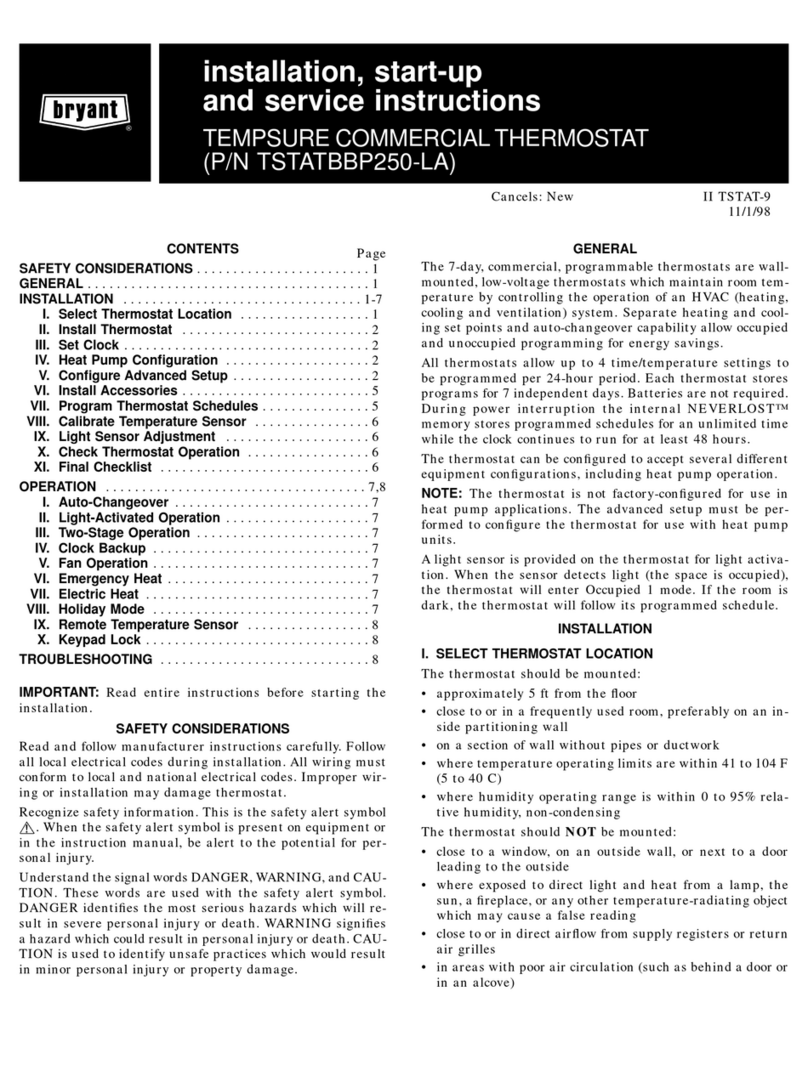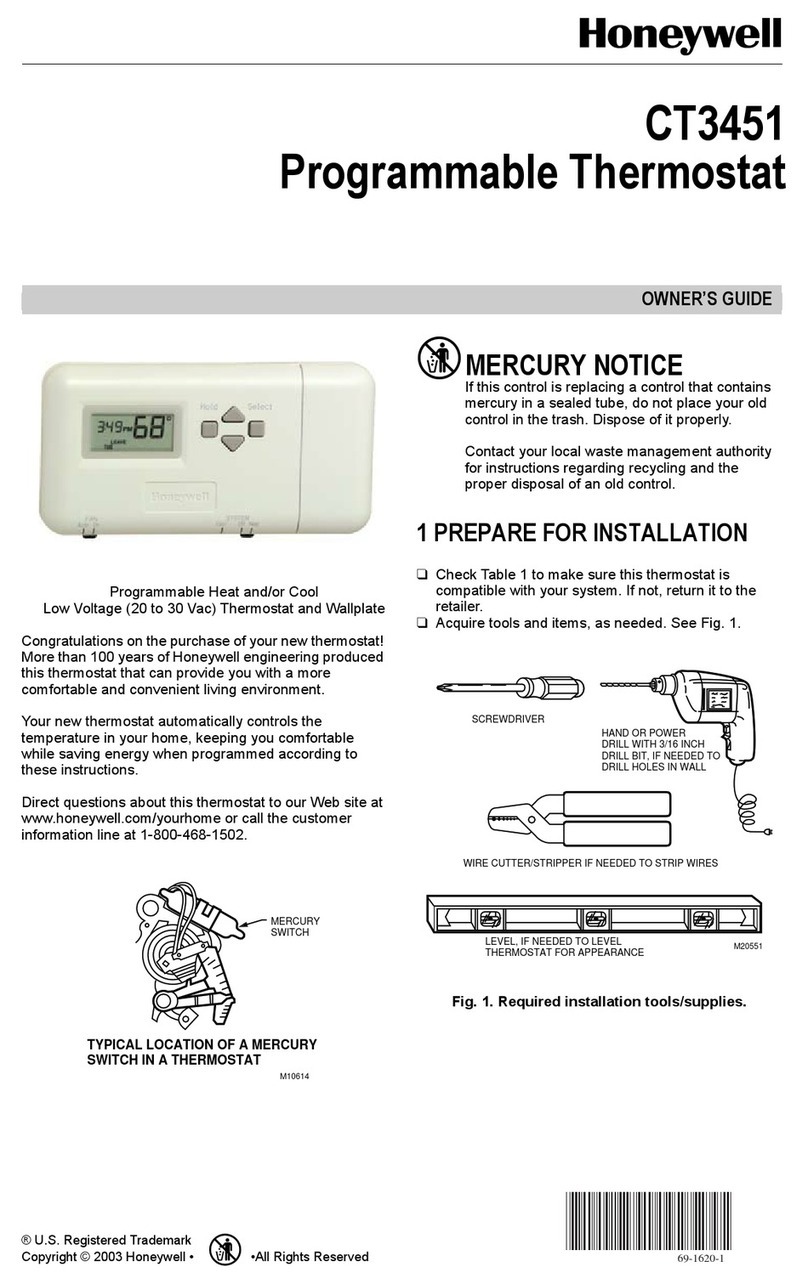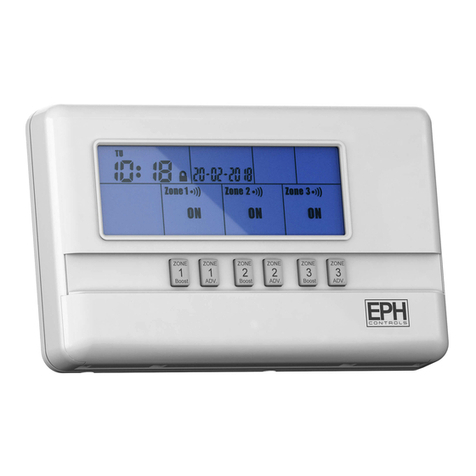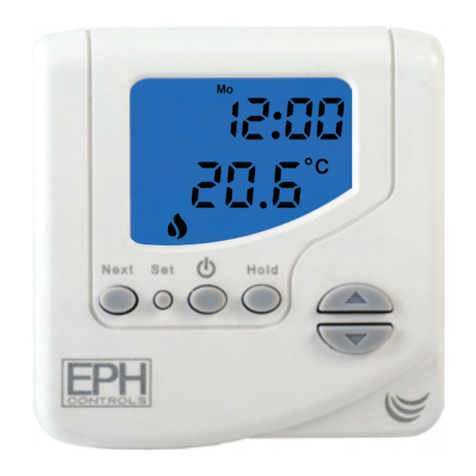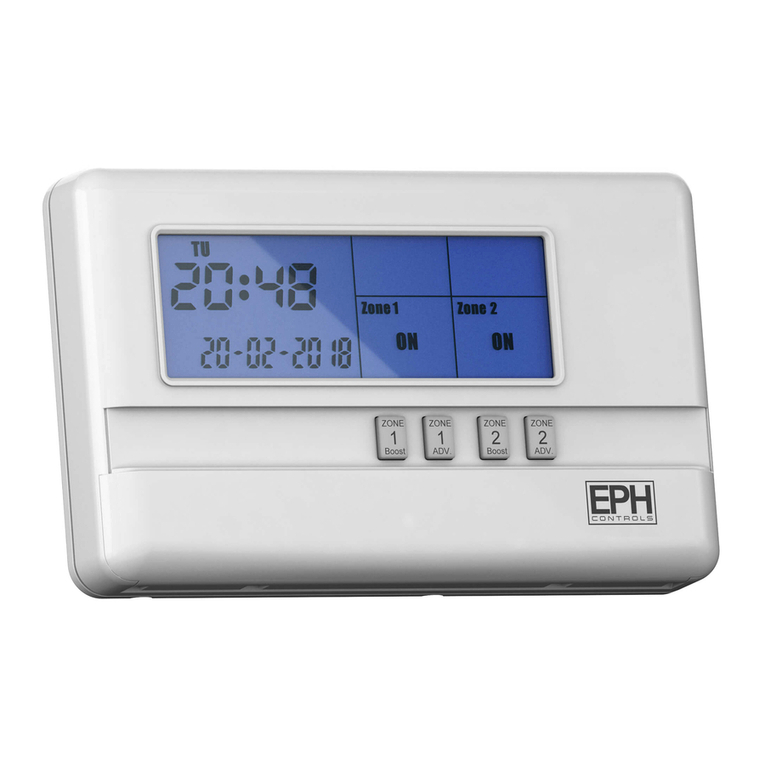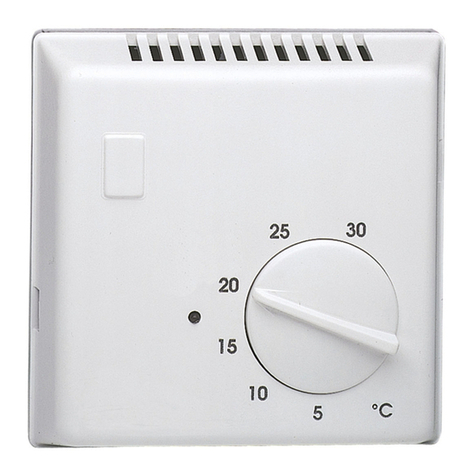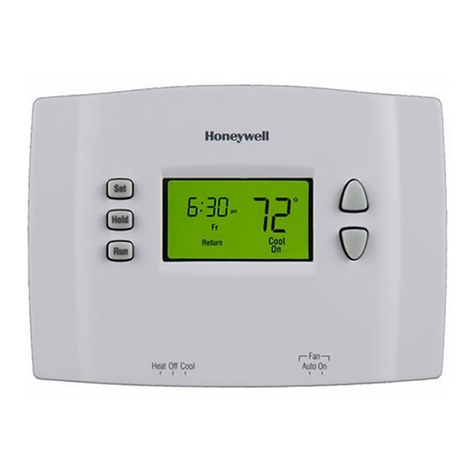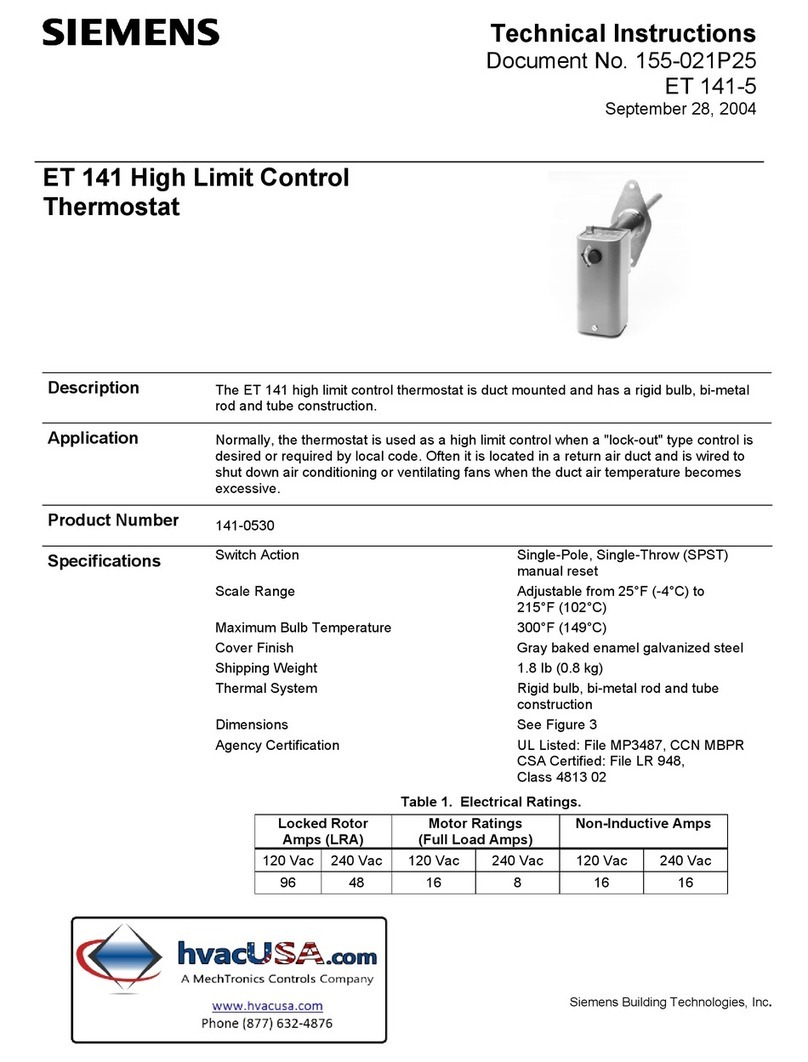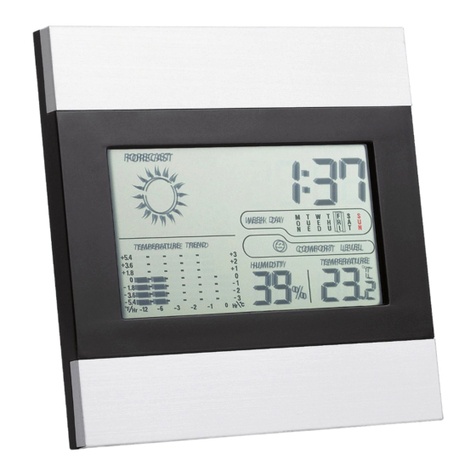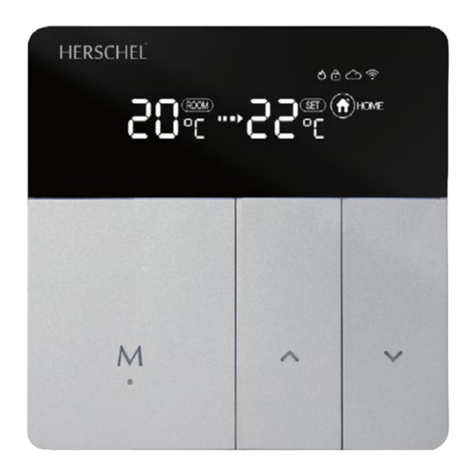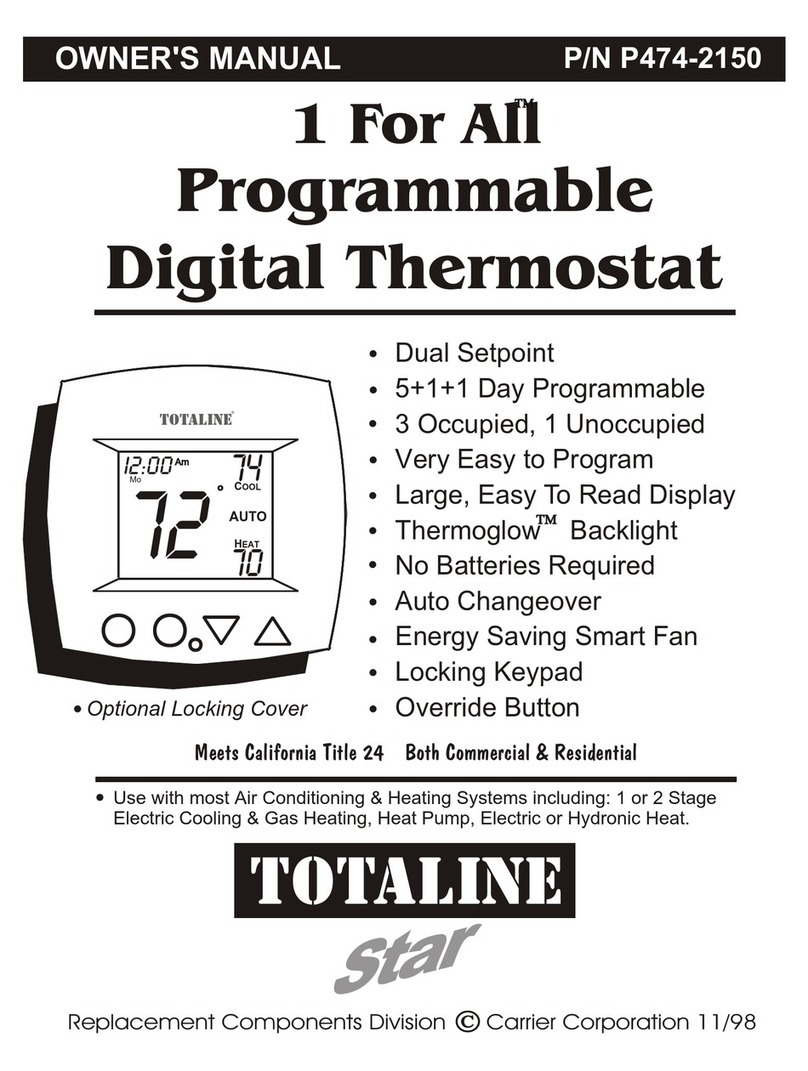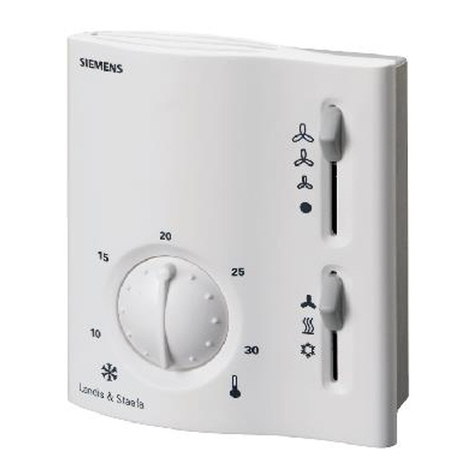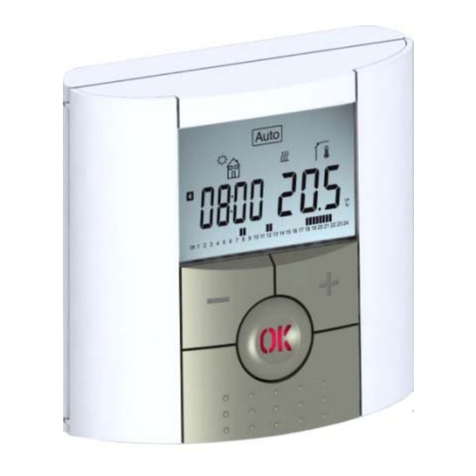
Operating Instructions
Page 2 of 3
CDT2-DS Room Thermostat Hardwired
11. Adjusting the switching dierential (Nor + DS)
12. Adjusting the setpoint temperature
Press the button once, Di set will appear on the screen.
The factory default switching dierential of 0.4C will appear on the screen.
Press the and buttons to select the desired dierential from 0.2 - 1˚C.
Press the button to return to normal operation.
Set
Set
Press the or buttons to adjust the temperature setpoint.
13. Change the thermostat mode
14. On/O control mode (Nor)
15. Delay start control mode (D.S.)
a.) Nor - Normal On/O mode
b.) D.S. - Delay Start mode
c.) TPi - Time, Proportional, Integral mode
Slacken the fastening screw on the bottom of the thermostat with a
philips head screwdriver.
The thermostat is hinged and can be opened 180 degrees.
On the printed circuit board, you will see jumper, JP3 which has 4 pins.
The default position is the middle two pins which is Normal On/O mode.
Pull out the jumper and insert it in the top two pins for TPI control or insert
it in the bottom two pins for Delay Start control.
Close the thermostat and tighten the fastening screw.
Once the jumper has been changed the thermostat must be reset for
these changes to become eective. (See section 8.)
When the temperature falls below the setpoint temperature, the ame
symbol will appear and the thermostat will switch on.
When the temperature rises above the setpoint temperature, the ame
symbol will disappear and the thermostat will switch o.
22˚C
21˚C
20˚C
19˚C
18˚C
17˚C
Temp
Time Minutes
Graph (14.1): On / O Control
Setpoint Temperature
200 40 60 80 100
Delay start is an energy saving mode.
When the delay start function is active the ame symbol will continuously
ash on the screen. When in this mode the activation of the thermostat is
delayed by a variable time depending on the current temperature, setpoint
temperature and also the fall in temperature from when the delay start has
activated. See graph (15.1) Delay Start Control.
The ame symbol will continue to ash until the thermostat activates.
When activated the thermostat will allow the heating system time to reach
the setpoint and delay start will remain inactive until it reaches this setpoint.
Delay start can be reactivated by:
Lowering the setpoint below the current temperature, pressing the set button
twice to set the temperature, then raising the setpoint above the zone
temperature.
The heating will be delayed as per the line on the graph.
If the dierence between the actual temperature and the setpoint is 1C the
thermostat will delay starting for circa 40 minutes.
If the dierence between the actual temperature and the setpoint is 3C the
thermostat will delay starting for circa 24 minutes.
If the dierence is 6C or more, the heating will be switched on immediately.
The time delay will change if the temperature drops from the original
calculation.
To deactivate Delay Start, loosen the xing screw and change the position of
the jumper JP3. Change the position of the jumper to TPI or Nor.
10. High and Low temperature limitation OFF
Set
Set
An upper and lower temperature limit may be chosen.
Press and hold the and buttons for 10 seconds.
“Limit OFF”will appear on the screen.
Press the button to select“Limit ON”mode.
Press the button to conrm you wish to adjust the high limit temperature.
Press the and buttons to select the high limit temperature.
Press the button to select the low limit temperature mode.
Press the and buttons to select the low limit temperature.
Press the button and the thermostat is ready for operation.
“Limit” will appear on the screen.
To deactivate High and Low temperature limitation.
Press and hold the and buttons for 10 seconds.
“Limit ON”will appear on the screen.
Press the button to deactivate this function.
“Limit OFF”will appear on the screen.
Press the button and the thermostat is ready for operation.
Set
Set
Set
Set
48.0
42.0
36.0
30.0
24.0
18.0
12.0
6.0
0.0
0123456
Temperature below thermostat setting °C
Time delay after Delay Start activated in minutes
Graph (15.1): Delay Start Control
EPH Controls Ireland
Sitecast Industrial Estate, Pouladu,
Cork, T12 W665, Ireland
sales@ephcontrols.com www.ephcontrols.com
EPH Controls UK
Unit E4, Welland Business Park, Valley Way, Market Harborough,
Leicestershire, LE16 7PS, United Kingdom
sales@ephcontrols.co.uk www.ephcontrols.co.uk
20170308_AW1077_CDT2-DS_OpIns_JW
